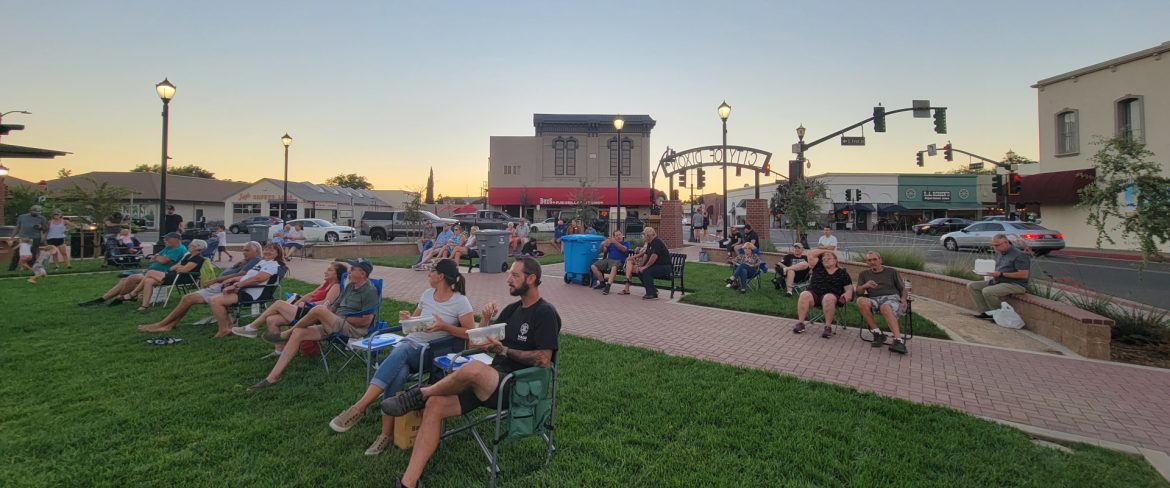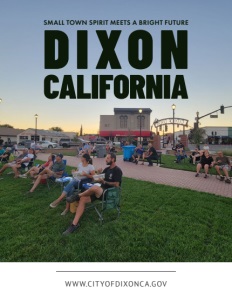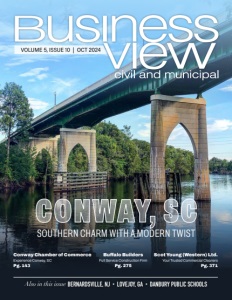Dixon, California
Small Town Spirit Meets a Bright Future
Welcoming rapid development and new opportunities, town leaders work to maintain a close-knit charm while embracing a dynamic path ahead
Dixon, California, a town perched on the eastern edge of Solano County, occupies a unique spot within the greater northern California region. Balancing between the metropolitan expanses of Sacramento and the sprawling reach of the Bay Area, Dixon has held firm to its identity as a small community. But as trends shift and regional development surges, the town is witnessing a transformation.
“Dixon has always been a smaller bedroom community, surrounded by agriculture,” explains Raffi Boloyan, Community Development Director. “We’re right in between the Bay Area and Sacramento, and for many years, people came here for the quieter, suburban life.” The town’s agricultural roots are visible everywhere, from vast open fields to the close-knit feel of its neighborhoods. But the last few years, especially post-COVID, have spurred new growth. With more people seeking suburban lifestyles, Dixon has seen an influx of new residents.
Dixon’s recent growth is largely driven by the 600-acre Homestead project, a major residential development. “It’s been one of our biggest pushes,” says Boloyan, with 1,200 units and commercial, including 180 affordable homes for seniors and families. The Specific Plan was approved in 2005, but delayed, it began in 2019 and is now 70% complete, bringing new residents daily. Two older stalled subdivisions are also nearing completion. Despite this expansion, Dixon maintains its small-town feel, with a strong sense of safety and community. “We’re still very much tied to agriculture,” he adds, highlighting the town’s enduring connection to its rural roots.
Downtown Dixon: Small Town Charm, Big Community Spirit
Dixon’s downtown is a compact, modest area that reflects the town’s character—quaint, community-driven, and, according to Boloyan, still grappling with how best to balance tradition with the pull toward modernization.
“Our downtown is primarily two blocks north, two blocks south, two blocks east, and two blocks west from the center,” says Boloyan, adding that while it may be small, there’s an ongoing effort to encourage more retail and pedestrian activity. “We want to activate it after hours, beyond the usual nine-to-five, by fostering entertainment options,” he explains. Still, as is often the case in tight-knit communities, opinions differ. “We’ve got some people in town who don’t want to see that change—they’re hesitant about introducing nightlife and entertainment downtown,” he admits, pointing to the tension that many towns face as they grow.
Dixon’s downtown has seen a revival, largely due to the new “Pardi Plaza,” a city-owned venue at the heart of the town. “It’s really become a venue for local community gatherings,” says Madeline Graf, Dixon’s Economic Development Manager. Hosting events like weekly concerts, farmers markets, and Christmas tree lightings, the plaza has become a popular hub for residents. “It’s right at that main four-corner part of downtown,” notes Boloyan, encouraging foot traffic and boosting local businesses. Even without a formal revitalization plan, the plaza has brought new energy to Dixon’s downtown core.
Expanding Dixon’s Housing Market: A Balancing Act
As Dixon continues to grow, so does the variety of housing products aimed at meeting the changing needs of its residents. For years, the town has been dominated by single-family homes, but as the town looks ahead, there’s an effort to diversify what’s available.
“There’s an area along I-80 that’s designated as campus mixed-use,” says Boloyan, referencing a part of the Homestead project, often referred to as the Gateway development. This 100-acre plot is earmarked for a combination of commercial, industrial, and higher-density residential uses. “It’s got prime access off the freeway, and we’re hoping to see something more than just single-family homes,” he explains.
The demand for single-family homes isn’t a surprise given the town’s recent influx of residents from urban areas. “After COVID, we saw a lot of people moving here from the Bay Area and Sacramento,” Graf notes. Many were seeking more space, particularly with the rise of remote work, and Dixon’s suburban charm became an attractive alternative. “People wanted more land, they wanted separation,” Boloyan adds. These new residents weren’t looking for urban, high-density living—they were seeking room for RVs, space for their kids, and a retreat from the hustle and bustle of city life.
“One of our goals is to introduce different products,” says Boloyan, aiming to cater to families, first-time buyers, and young professionals. The town is focusing on alternatives like condos and townhomes to provide more affordable options. A new development by the Lewis Group reflects this push—a duplex project along the main highway, offering upscale amenities like a clubhouse and pool. “It’s designed to attract white-collar professionals,” he explains, targeting those from nearby biotech or UC Davis who seek quality living without large yards.
Parks and Recreation: A Key Feature of Dixon’s Appeal
Dixon may be a growing town, but its commitment to maintaining expansive green spaces remains steadfast. Parks are woven into the community’s fabric, offering both residents and visitors ample opportunities for outdoor activities.
“Parks are a very important part of our community,” Boloyan says. Dixon recently updated its Parks and Recreation Master Plan, indicating how seriously the town takes this amenity. “We’re on the higher side when it comes to parkland per resident—five acres per thousand people,” he notes, pointing out that this is a larger ratio than many neighboring communities. With plenty of smaller pocket parks, linear parks, and large open spaces, Dixon offers a variety of green spots for people to relax, exercise, and enjoy nature.
However, like most towns, Dixon faces funding challenges. “We have to balance the services people want with what we can afford,” says Boloyan, noting that while parks are a priority, maintaining them requires careful financial planning. The town relies on property taxes and local businesses, which don’t always cover all desired services. Dixon’s standout recreational facilities, like the all-weather soccer field, attract locals and visitors. Hall Park, the town’s “crown jewel,” houses City Hall, an aquatic center, tennis courts, and little league fields, serving as a key venue for community events and recreation.
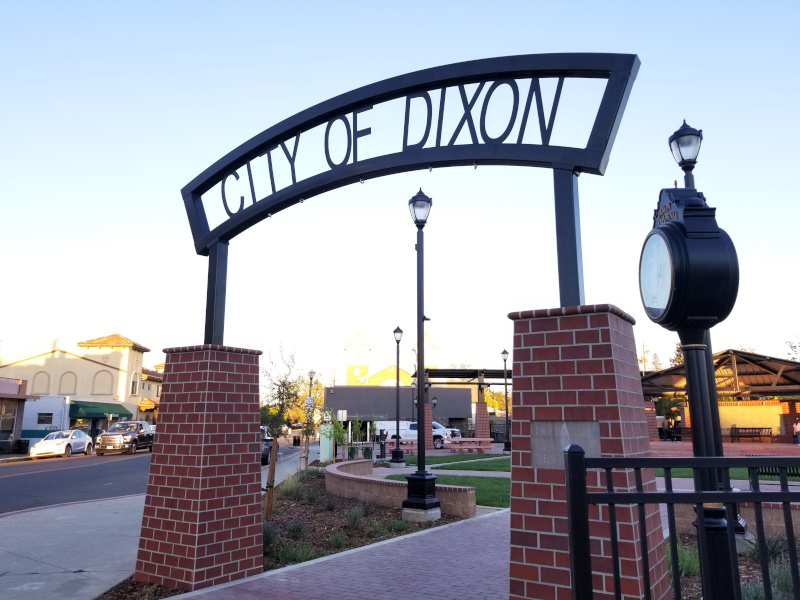
Tackling Critical Infrastructure: Planning for Dixon’s Future
As Dixon continues to grow commercially and on the residential side, the town’s infrastructure is evolving to meet the demands of a changing population. “We have a newer wastewater treatment plant that opened about ten years ago,” Graf says, explaining that the facility was designed with future growth in mind. “Our engineering team is currently working on an expansion project to add onto that facility.”
Dixon works with developers to ensure that its water system can accommodate the influx of new residents and businesses. Developers pay impact fees that fund infrastructure improvements. “When they come into town, they help expand infrastructure for the things they’re building,” Graf adds, reinforcing the collaborative effort required to meet the town’s needs.
Road improvements are another key focus for Dixon, particularly the long-delayed Parkway Blvd. Overcrossing, designed to address the town’s railroad challenges. “We are a community bisected by an active railroad,” explains Boloyan, with trains passing every 30 minutes, disrupting traffic and emergency response. The overcrossing, in planning for over 20 years, faces rising costs and evolving requirements from Union Pacific Railroad. Despite these hurdles, Dixon has made progress, and Boloyan is optimistic about securing state and federal funding. The project, once completed, will ease traffic congestion and improve emergency response times. “We think we have a very good shot,” he adds.
Healthcare in Dixon: Resources for a Growing Community
As Dixon’s population grows, so too does the need for healthcare services. While the town may not have the infrastructure to support its own hospital, its proximity to world-class medical facilities in nearby cities provides residents with access to specialized care. At the same time, Dixon is working to expand local healthcare options to better serve its community.
“Being a town of just over 20,000, we don’t have a lot of health services here,” says Boloyan, acknowledging the current limitations. Dixon offers a handful of primary care offices, along with a few dentists and orthodontists. However, for more specialized or extensive medical services, most residents head out of town. “We’re surrounded by some of the world’s best places,” he explains, referencing UC Davis’s medical center just seven miles up the road, along with major healthcare providers in nearby Vacaville, including North Bay Healthcare and Kaiser Permanente.
“We did just get an urgent care this fall,” Graf notes, with North Bay Health opening the town’s first urgent care center, providing residents with convenient non-emergency care. Additionally, Dixon is focused on community health, maintaining connections with providers to expand services. A downtown health clinic serves lower-income residents, offering basic care, food giveaways, and flu clinics. These initiatives show Dixon’s growing appeal and efforts to ensure essential healthcare services are accessible to all members of the community.
Strengthening Community Through Key Partnerships
In Dixon, collaboration between the city, local businesses, and community groups forms the backbone of its vibrant civic life. Partnerships are essential to the town’s continued growth and the success of its many initiatives, ranging from business development to community events.
“We have a great relationship with our Chamber of Commerce,” says Graf, emphasizing how the Chamber has evolved in recent years to play a pivotal role in both the business community and broader civic activities. This partnership is at the heart of many of Dixon’s most cherished events. “We partner with them on most of the events that we do, like the concerts in the plaza—that is spearheaded by the Chamber,” Graf adds. The Chamber also works tirelessly to support Dixon’s business ecosystem, hosting workshops, mixers, and networking events designed to strengthen the local economy and foster connections among business owners.
The Downtown Dixon Business Association (DDBA) also plays a vital role in revitalizing the downtown area. “We’ve developed strong relationships with both the Chamber and the DDBA to bring back events,” Graf explains, such as farmers markets and seasonal celebrations that blend commerce with local pride. Additionally, Dixon’s Parks and Recreation team works closely with nonprofit youth sports leagues, ensuring access to programs like soccer and little league. These partnerships create valuable opportunities for the town’s youth to stay active and engaged.
Workforce Development and Regional Collaboration
As Dixon grows, workforce development remains a key consideration, albeit with a regional approach. While the town is small, partnerships within Solano County allow Dixon to leverage broader resources, ensuring that residents have access to training and employment opportunities without the need for the town to manage these programs independently.
“We do have the Workforce Development Board in Solano County,” says Graf. This board plays a pivotal role in offering training and resources to job seekers across the region, helping bridge the gap in workforce shortages that many communities, including Dixon, are facing. “We work with them to promote the opportunities they have to offer,” she explains, noting that due to Dixon’s size, the town relies heavily on these community partners to take the lead in workforce development efforts.
Boloyan then emphasizes the important role of the Solano Economic Development Corporation (EDC) in Dixon’s economy. “The Solano EDC is really a leader in economic development across the county,” he says, helping attract businesses and align regional goals. Collaboration in Solano County extends to housing policy, where cities partnered to hire a single consultant for their housing element plans, saving resources and improving efficiency. “It was more economical, more efficient,” he notes. Local nonprofits, like Rotary and Kiwanis, also contribute significantly, with their efforts helping to strengthen Dixon’s social fabric and community spirit.
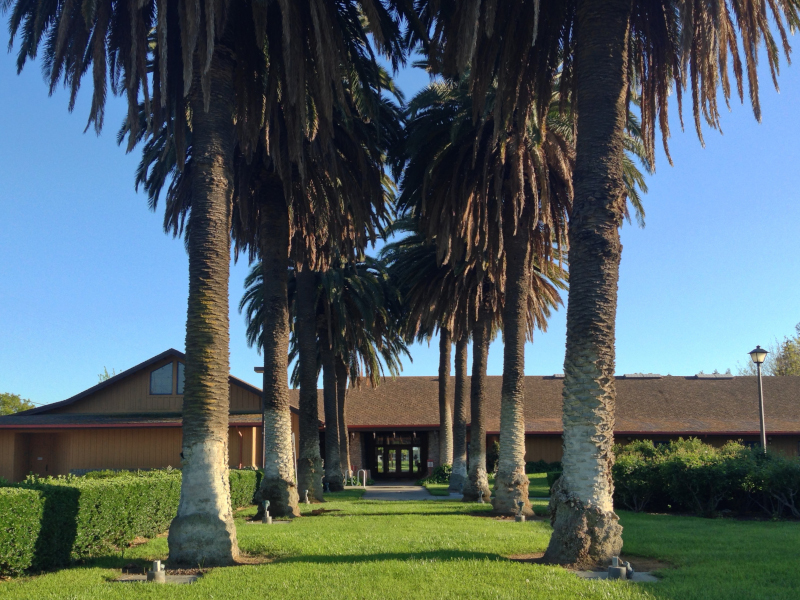
Sustainable Development and Electric Challenges in Dixon
In California, sustainability and environmental responsibility are woven into nearly every facet of development, and Dixon is no exception.
“California as a whole is very green,” Boloyan explains. The state has long been a leader in environmental policy, with many green initiatives embedded directly into building codes. “We don’t have anything that goes above and beyond those codes,” he adds, noting that simply following the state’s guidelines places Dixon ahead of many cities nationwide in terms of sustainable building practices. From energy efficiency standards to water conservation measures, developers in Dixon must meet these robust state-level requirements as a baseline.
However, the push toward greener development isn’t without its challenges. One of the most significant hurdles facing Dixon—and much of California—centers around the power grid. “One of the biggest issues we have right now, like all of California, is our power grid,” Boloyan says. “A lot of developments get stalled because there’s not enough power,” he notes, pointing out that the utility company responsible for Northern California, PG&E, often struggles to keep pace with demand due to competing priorities across the region.
Dixon’s Roadmap: Priorities for the Next 18 Months
As Dixon looks to the future, the town’s leadership is focused on bolstering its core infrastructure, retaining staff, and ensuring steady growth while preserving the small-town atmosphere that defines its character. The next 18 months will be a critical period as Dixon navigates challenges and opportunities on multiple fronts.
“We need to be able to keep and maintain staff,” says Boloyan, touching on one of the most pressing issues the town faces. Like many municipalities across California, Dixon is grappling with high turnover, particularly in essential services like police, fire, and building inspection. “Less and less people are going into these fields,” he notes. The town’s ability to retain skilled workers is crucial to maintaining the energy and synergy needed to keep projects and services moving forward. Addressing this will be central to Dixon’s strategy in the coming months.
Going forward, infrastructure remains a top priority, particularly the long-awaited Parkway Overcrossing. “Parkway is probably one of the number one priorities of the city,” says Boloyan, with the project expected to improve traffic and safety. Alongside this, the city is addressing key issues like water rates and a proposed sales tax measure. Economic development is also a focus, with plans to attract more businesses and reduce residents’ reliance on nearby cities.
For both Boloyan and Graf, the future is a balancing act between progress and preservation. “We’re growing and changing, but we’re also still maintaining that small-town charm,” Graf says. It’s this balance that defines Dixon’s next chapter—a community that’s eager to embrace new opportunities while holding on to the values and connections that have always made it feel like home.
AT A GLANCE
Dixon, California
What: Growing small town focused on sustainable development and community engagement
Where: Eastern Solano County, California
Website: https://www.cityofdixonca.gov/
PREFERRED VENDORS
Bank of Stockton – https://bankofstockton.com/
Bank of Stockton is California’s oldest bank still operating under its original charter. With 21 branches throughout 9 contiguous counties, Bank of Stockton is characterized by its strong brand of personalized service, technological banking innovations, lending expertise and reinvesting back into the communities it serves.
